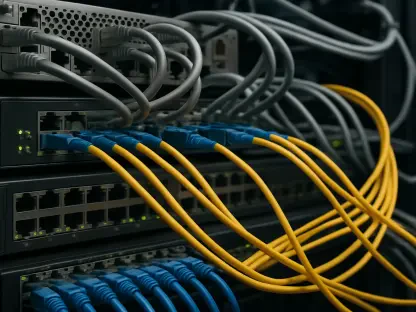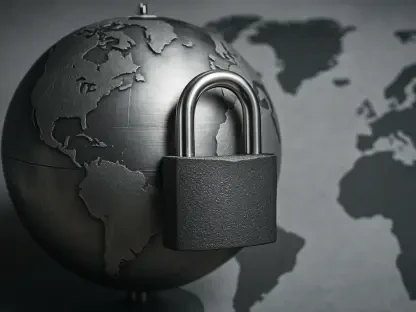End-to-end encryption (E2EE) is revolutionizing the way we communicate through text messaging, particularly when it comes to using different platforms. As technology evolves and security concerns grow, E2EE has become increasingly crucial in maintaining user privacy and securing conversations. This article will explore the advancements of E2EE in messaging between Android and iPhone users, address cybersecurity threats from criminal organizations, and examine the current challenges that US cybersecurity agencies face.
Advancements in End-to-End Encryption for Cross-Platform Messaging
Recent Developments
In an era where digital privacy is paramount, the GSM Association’s recent endorsement of the Rich Communication Services (RCS) protocol with integrated E2EE marks a significant milestone for secure communication. The RCS protocol, initially designed to enhance the capabilities of SMS, now ensures that messages exchanged between Android and iPhone users are shielded with robust encryption. This development addresses the long-standing issue of cross-platform security disparities, effectively neutralizing possible vulnerabilities that cybercriminals might exploit.
Integrating E2EE into the RCS protocol ensures that text messages are readable only by the sender and the recipient, rendering interception attempts futile. This means that even if a malicious actor were to intercept the communication, the encrypted data would remain incomprehensible and of no use. Consequently, users on both ends of the communication spectrum—whether on Android or iPhone—can maintain peace of mind knowing their conversations are safeguarded from prying eyes.
Manufacturer Commitment
Apple’s decision to join this initiative signifies its unwavering commitment to enhancing user security across platforms. By incorporating E2EE within the RCS protocol, Apple guarantees that even its users’ communication with Android devices remains private and secure. This cross-platform cooperation is a testament to the technology giant’s dedication to upholding high standards of user privacy.
Furthermore, this commitment from Apple reflects a growing recognition of the necessity to protect user data in increasingly interconnected digital environments. Apple has consistently championed user privacy, and its support for E2EE in cross-platform messaging reaffirms this stance. The protocol ensures that encrypted messages can only be decrypted by the intended recipients, reinforcing a trust-based digital environment. Such initiatives are crucial as they foster a more secure and private communication landscape for all users.
Cybersecurity Threats and Criminal Organizations
The Evolving Threat Landscape
The digital world is constantly under threat from adaptable and sophisticated criminal organizations targeting unencrypted communication channels. These threats are evolving at an alarming pace, as evidenced by the surge in data breaches and cyberattacks targeting systems that lack E2EE. Cybersecurity experts warn that unprotected messaging systems are particularly vulnerable, with malicious actors finding new ways to infiltrate and exploit these platforms.
With advances in technology, cybercriminals have developed more refined methods to intercept and manipulate data, highlighting the necessity for robust encryption. In response to this escalating threat landscape, implementing E2EE for cross-platform messaging has become imperative. By adopting E2EE, users can be assured that their communications are secure, even in the face of sophisticated cyber threats. This encryption method effectively mitigates the risk of intercepted data, making it significantly harder for criminals to access sensitive information.
Countermeasures and Strategies
Organizations and cybersecurity agencies are constantly on the lookout for new strategies to combat these ever-evolving threats. One of the primary countermeasures is the widespread adoption of E2EE, which secures communication channels from end-to-end. This encryption ensures that messages are accessible only to the intended recipients, significantly reducing the potential for intercepted communications. By integrating E2EE into messaging platforms, organizations aim to protect user data and sensitive information from cybercriminals.
In addition to E2EE, cybersecurity agencies continually develop advanced techniques to detect and thwart cyber threats. This proactive approach includes regular updates to security protocols and collaborations with tech companies to enhance protective measures. By staying ahead of cybercriminals and constantly upgrading security frameworks, these agencies work to create a safer digital environment. Such efforts are crucial in maintaining user trust and ensuring that technological advancements do not come at the expense of security.
Challenges for US Cybersecurity Agencies
Administrative Shifts
US cybersecurity agencies face a myriad of challenges, particularly notable during times of administrative change. These shifts require agencies to adapt swiftly to new policies and priorities while staying ahead of emerging threats. The digital landscape’s continuous evolution demands that these agencies remain agile and resourceful to effectively respond to new vulnerabilities. This dynamic environment can strain resources and necessitate quick, innovative solutions to maintain robust security measures.
As technology progresses, cybersecurity agencies must ensure they have the capabilities to manage and mitigate threats efficiently. The constant development of new threats means agencies must keep up with technological advancements to prevent and counter cyberattacks. This includes developing expertise in the latest security protocols, improving intelligence-sharing networks, and maintaining strong partnerships with the private sector to bolster overall security efforts.
Policy and Implementation
End-to-end encryption (E2EE) is transforming text messaging, especially across different platforms like Android and iPhone. As technology advances and security risks intensify, E2EE has become vital for protecting user privacy and safeguarding conversations. This article delves into the progress of E2EE in messaging between Android and iPhone users, tackles cybersecurity threats from criminal organizations, and discusses the current challenges faced by U.S. cybersecurity agencies.
The growing need for secure communication is evident as more personal and sensitive information is shared through messaging apps. E2EE ensures that messages are only read by the intended recipients, making it harder for malicious actors to intercept and decode private conversations. Despite these benefits, implementing E2EE poses significant challenges. Cybersecurity agencies must balance user privacy with national security concerns, keeping ahead of increasingly sophisticated threats while navigating legal and ethical considerations.









